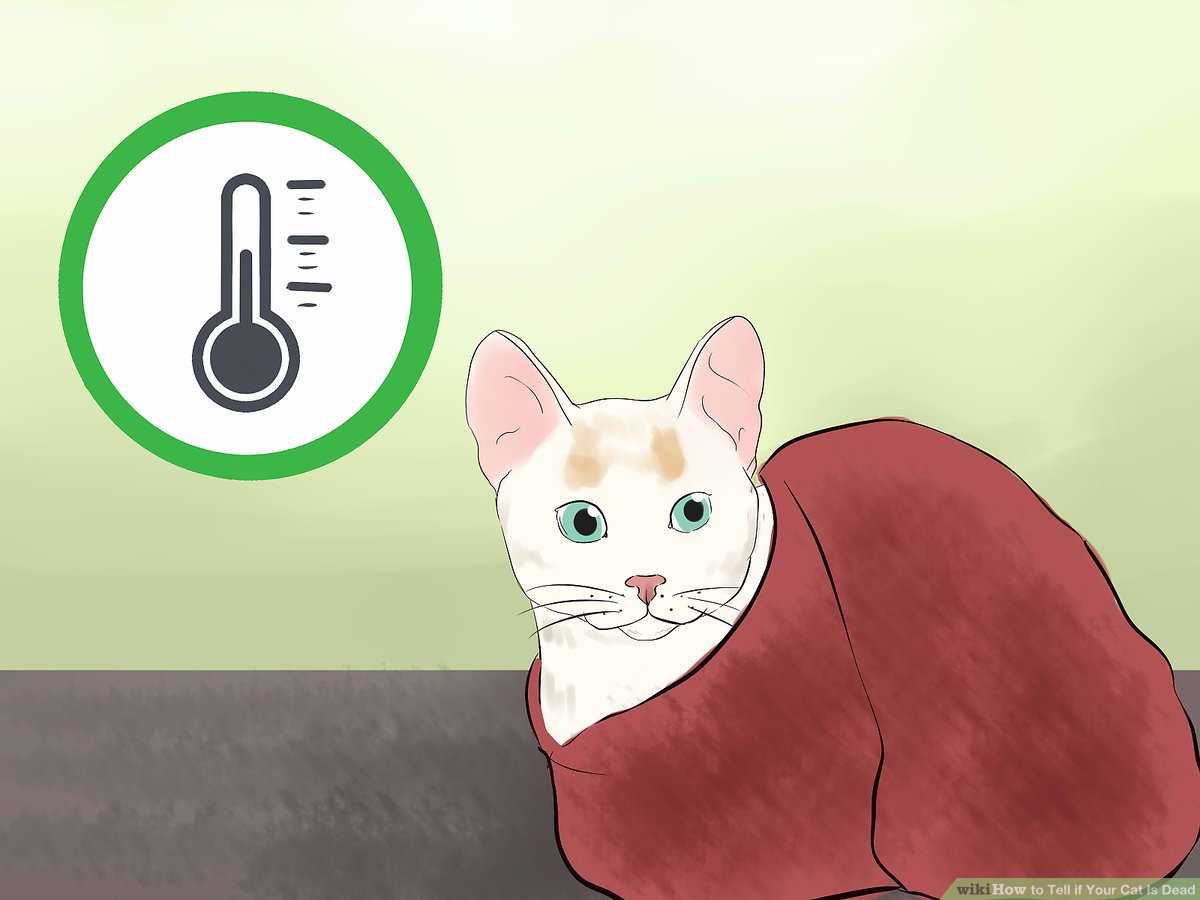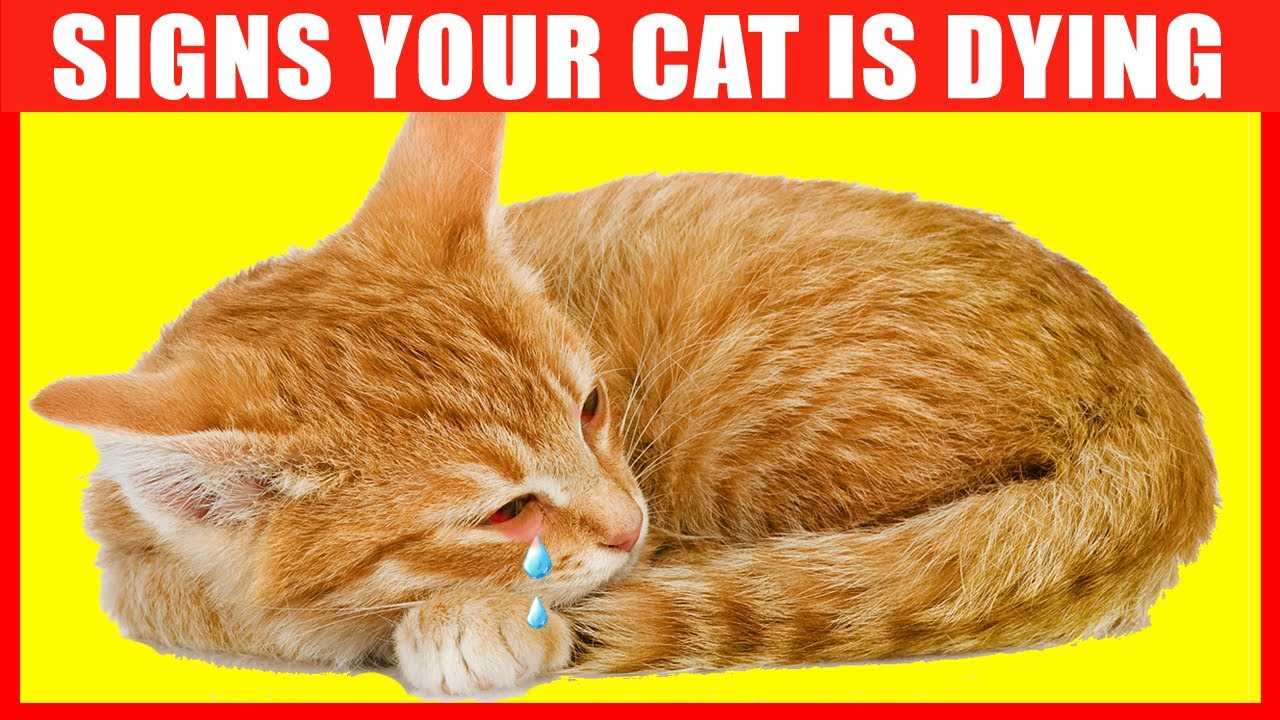



Pay close attention to changes in behavior. A once playful companion may become withdrawn, showing little interest in activities they once loved. If I start hiding more often or avoiding interactions, it’s a signal that something isn’t right.
Monitor eating and drinking habits. A noticeable decline in appetite or a refusal to drink water can indicate significant issues. If I turn away from my favorite meals or simply ignore my food bowl, it’s worth checking in with a vet.
Watch for physical signs. Weight loss, difficulty in movement, or labored breathing are important indicators. If I seem to struggle getting up or moving around, it’s a clear message that my health is declining.
Observe changes in grooming habits. If I neglect my fur, leading to a scruffy appearance, it can point to underlying health problems. A well-groomed feline should maintain their coat; a shift in this behavior is a red flag.
Lastly, keep an eye on the eyes. Dullness or cloudiness can signify distress. If my bright eyes begin to look lifeless, it’s time to consult with a professional to assess the situation.
Signs of an Imminent Departure
Noticeable changes in behavior can indicate a significant shift in health. Keep an eye out for the following signs:
- Increased lethargy and lack of interest in play or interaction.
- Changes in appetite, such as refusing food or water.
- Unusual vocalizations, which may signal discomfort or distress.
- Isolation from family and preferred resting spots.
- Difficulty moving or signs of pain when getting up or lying down.
Physical Symptoms to Monitor

Physical signs can offer clues regarding overall well-being. Pay attention to these:
- Weight loss or significant changes in body condition.
- Unkempt fur or excessive grooming behaviors.
- Labored breathing or coughing.
- Changes in bathroom habits, such as straining or blood in urine.
- Cold extremities, particularly in the ears and paws.
Understanding these indicators can facilitate informed decisions and ensure comfort during challenging times.
Recognizing Physical Signs of Decline in Your Cat
Pay attention to changes in appetite. A sudden decrease in food intake or complete refusal to eat can signal serious health issues. Monitor water consumption as well; increased or decreased thirst can indicate underlying problems.
Observe energy levels. If a once-active feline becomes lethargic and prefers to rest in secluded spots, this could be a sign of distress. Difficulty in movement, such as limping or reluctance to jump, may also indicate discomfort.
Changes in Grooming Habits
Notice alterations in grooming behavior. A decline in self-grooming can result in a disheveled appearance, indicating that an individual is not feeling well. Conversely, excessive grooming in certain areas may suggest pain or irritation.
Behavioral Shifts
Behavioral changes can be telling. Increased aggression, withdrawal, or unusual vocalizations may reflect discomfort or anxiety. Additionally, hiding more frequently than usual can indicate a desire to escape from stressors or pain.
Understanding Behavioral Changes That Indicate Distress
Pay attention to alterations in routine habits. A sudden withdrawal from social interactions can signal discomfort. If I hide more than usual or avoid my favorite spots, something is likely wrong.
Changes in appetite might arise. If I suddenly refuse food or show disinterest in treats, it could indicate significant distress. A rapid decline in eating can be particularly concerning. Also, excessive grooming or a lack of grooming might suggest that I am feeling unwell.
Vocalization patterns can shift dramatically. Increased yowling or unusual meowing may indicate pain or confusion. If I seem restless, pacing back and forth, it’s a sign I’m not at ease.
Behavior towards litter box habits is crucial. If I start having accidents outside the box or show difficulty using it, this could reflect underlying health issues. Changes in the frequency or consistency of elimination should also be monitored closely.
Physical contact preferences may alter as well. If I shy away from petting or cuddling, it’s a clear signal of distress. I might prefer solitude over companionship during tough times.
For comfort, ensuring I am free from fleas is essential. Explore options like the best oral flea treatment for cats without vet prescription to keep me feeling my best.
Stay observant. Recognizing these behavioral shifts can help identify when more serious issues arise. Taking action swiftly can make a significant difference in my well-being.
When to Seek Veterinary Assistance for End-of-Life Care

Immediate consultation with a veterinarian is crucial at any sign of significant decline in health. If there is noticeable weight loss, persistent vomiting, or refusal to eat, these are indicators that professional help is necessary.
Specific Symptoms Indicating Need for Help
Excessive lethargy or unresponsiveness can signal that medical intervention is required. If mobility is severely impaired or pain seems evident, reaching out to a vet is essential for assessment and guidance on comfort care options.
Behavioral Changes Requiring Attention
Alterations in habits, such as hiding or increased vocalization, may highlight discomfort or distress. If these behaviors persist, it’s important to seek veterinary advice for potential solutions and support. Additionally, any signs of labored breathing or seizures should prompt an immediate visit to the clinic.
Understanding these signs allows for informed decisions regarding end-of-life care, ensuring the best possible comfort and dignity during this difficult time.
Pay close attention to changes in behavior. A once playful companion may become withdrawn, showing little interest in activities they once loved. If I start hiding more often or avoiding interactions, it’s a signal that something isn’t right.
Monitor eating and drinking habits. A noticeable decline in appetite or a refusal to drink water can indicate significant issues. If I turn away from my favorite meals or simply ignore my food bowl, it’s worth checking in with a vet.
Watch for physical signs. Weight loss, difficulty in movement, or labored breathing are important indicators. If I seem to struggle getting up or moving around, it’s a clear message that my health is declining.
Observe changes in grooming habits. If I neglect my fur, leading to a scruffy appearance, it can point to underlying health problems. A well-groomed feline should maintain their coat; a shift in this behavior is a red flag.
Lastly, keep an eye on the eyes. Dullness or cloudiness can signify distress. If my bright eyes begin to look lifeless, it’s time to consult with a professional to assess the situation.
Signs of an Imminent Departure
Noticeable changes in behavior can indicate a significant shift in health. Keep an eye out for the following signs:
- Increased lethargy and lack of interest in play or interaction.
- Changes in appetite, such as refusing food or water.
- Unusual vocalizations, which may signal discomfort or distress.
- Isolation from family and preferred resting spots.
- Difficulty moving or signs of pain when getting up or lying down.
Physical Symptoms to Monitor

Physical signs can offer clues regarding overall well-being. Pay attention to these:
- Weight loss or significant changes in body condition.
- Unkempt fur or excessive grooming behaviors.
- Labored breathing or coughing.
- Changes in bathroom habits, such as straining or blood in urine.
- Cold extremities, particularly in the ears and paws.
Understanding these indicators can facilitate informed decisions and ensure comfort during challenging times.
Recognizing Physical Signs of Decline in Your Cat
Pay attention to changes in appetite. A sudden decrease in food intake or complete refusal to eat can signal serious health issues. Monitor water consumption as well; increased or decreased thirst can indicate underlying problems.
Observe energy levels. If a once-active feline becomes lethargic and prefers to rest in secluded spots, this could be a sign of distress. Difficulty in movement, such as limping or reluctance to jump, may also indicate discomfort.
Changes in Grooming Habits
Notice alterations in grooming behavior. A decline in self-grooming can result in a disheveled appearance, indicating that an individual is not feeling well. Conversely, excessive grooming in certain areas may suggest pain or irritation.
Behavioral Shifts
Behavioral changes can be telling. Increased aggression, withdrawal, or unusual vocalizations may reflect discomfort or anxiety. Additionally, hiding more frequently than usual can indicate a desire to escape from stressors or pain.
Understanding Behavioral Changes That Indicate Distress
Pay attention to alterations in routine habits. A sudden withdrawal from social interactions can signal discomfort. If I hide more than usual or avoid my favorite spots, something is likely wrong.
Changes in appetite might arise. If I suddenly refuse food or show disinterest in treats, it could indicate significant distress. A rapid decline in eating can be particularly concerning. Also, excessive grooming or a lack of grooming might suggest that I am feeling unwell.
Vocalization patterns can shift dramatically. Increased yowling or unusual meowing may indicate pain or confusion. If I seem restless, pacing back and forth, it’s a sign I’m not at ease.
Behavior towards litter box habits is crucial. If I start having accidents outside the box or show difficulty using it, this could reflect underlying health issues. Changes in the frequency or consistency of elimination should also be monitored closely.
Physical contact preferences may alter as well. If I shy away from petting or cuddling, it’s a clear signal of distress. I might prefer solitude over companionship during tough times.
For comfort, ensuring I am free from fleas is essential. Explore options like the best oral flea treatment for cats without vet prescription to keep me feeling my best.
Stay observant. Recognizing these behavioral shifts can help identify when more serious issues arise. Taking action swiftly can make a significant difference in my well-being.
When to Seek Veterinary Assistance for End-of-Life Care

Immediate consultation with a veterinarian is crucial at any sign of significant decline in health. If there is noticeable weight loss, persistent vomiting, or refusal to eat, these are indicators that professional help is necessary.
Specific Symptoms Indicating Need for Help
Excessive lethargy or unresponsiveness can signal that medical intervention is required. If mobility is severely impaired or pain seems evident, reaching out to a vet is essential for assessment and guidance on comfort care options.
Behavioral Changes Requiring Attention
Alterations in habits, such as hiding or increased vocalization, may highlight discomfort or distress. If these behaviors persist, it’s important to seek veterinary advice for potential solutions and support. Additionally, any signs of labored breathing or seizures should prompt an immediate visit to the clinic.
Understanding these signs allows for informed decisions regarding end-of-life care, ensuring the best possible comfort and dignity during this difficult time.
Pay close attention to changes in behavior. A once playful companion may become withdrawn, showing little interest in activities they once loved. If I start hiding more often or avoiding interactions, it’s a signal that something isn’t right.
Monitor eating and drinking habits. A noticeable decline in appetite or a refusal to drink water can indicate significant issues. If I turn away from my favorite meals or simply ignore my food bowl, it’s worth checking in with a vet.
Watch for physical signs. Weight loss, difficulty in movement, or labored breathing are important indicators. If I seem to struggle getting up or moving around, it’s a clear message that my health is declining.
Observe changes in grooming habits. If I neglect my fur, leading to a scruffy appearance, it can point to underlying health problems. A well-groomed feline should maintain their coat; a shift in this behavior is a red flag.
Lastly, keep an eye on the eyes. Dullness or cloudiness can signify distress. If my bright eyes begin to look lifeless, it’s time to consult with a professional to assess the situation.
Signs of an Imminent Departure
Noticeable changes in behavior can indicate a significant shift in health. Keep an eye out for the following signs:
- Increased lethargy and lack of interest in play or interaction.
- Changes in appetite, such as refusing food or water.
- Unusual vocalizations, which may signal discomfort or distress.
- Isolation from family and preferred resting spots.
- Difficulty moving or signs of pain when getting up or lying down.
Physical Symptoms to Monitor

Physical signs can offer clues regarding overall well-being. Pay attention to these:
- Weight loss or significant changes in body condition.
- Unkempt fur or excessive grooming behaviors.
- Labored breathing or coughing.
- Changes in bathroom habits, such as straining or blood in urine.
- Cold extremities, particularly in the ears and paws.
Understanding these indicators can facilitate informed decisions and ensure comfort during challenging times.
Recognizing Physical Signs of Decline in Your Cat
Pay attention to changes in appetite. A sudden decrease in food intake or complete refusal to eat can signal serious health issues. Monitor water consumption as well; increased or decreased thirst can indicate underlying problems.
Observe energy levels. If a once-active feline becomes lethargic and prefers to rest in secluded spots, this could be a sign of distress. Difficulty in movement, such as limping or reluctance to jump, may also indicate discomfort.
Changes in Grooming Habits
Notice alterations in grooming behavior. A decline in self-grooming can result in a disheveled appearance, indicating that an individual is not feeling well. Conversely, excessive grooming in certain areas may suggest pain or irritation.
Behavioral Shifts
Behavioral changes can be telling. Increased aggression, withdrawal, or unusual vocalizations may reflect discomfort or anxiety. Additionally, hiding more frequently than usual can indicate a desire to escape from stressors or pain.
Understanding Behavioral Changes That Indicate Distress
Pay attention to alterations in routine habits. A sudden withdrawal from social interactions can signal discomfort. If I hide more than usual or avoid my favorite spots, something is likely wrong.
Changes in appetite might arise. If I suddenly refuse food or show disinterest in treats, it could indicate significant distress. A rapid decline in eating can be particularly concerning. Also, excessive grooming or a lack of grooming might suggest that I am feeling unwell.
Vocalization patterns can shift dramatically. Increased yowling or unusual meowing may indicate pain or confusion. If I seem restless, pacing back and forth, it’s a sign I’m not at ease.
Behavior towards litter box habits is crucial. If I start having accidents outside the box or show difficulty using it, this could reflect underlying health issues. Changes in the frequency or consistency of elimination should also be monitored closely.
Physical contact preferences may alter as well. If I shy away from petting or cuddling, it’s a clear signal of distress. I might prefer solitude over companionship during tough times.
For comfort, ensuring I am free from fleas is essential. Explore options like the best oral flea treatment for cats without vet prescription to keep me feeling my best.
Stay observant. Recognizing these behavioral shifts can help identify when more serious issues arise. Taking action swiftly can make a significant difference in my well-being.
When to Seek Veterinary Assistance for End-of-Life Care

Immediate consultation with a veterinarian is crucial at any sign of significant decline in health. If there is noticeable weight loss, persistent vomiting, or refusal to eat, these are indicators that professional help is necessary.
Specific Symptoms Indicating Need for Help
Excessive lethargy or unresponsiveness can signal that medical intervention is required. If mobility is severely impaired or pain seems evident, reaching out to a vet is essential for assessment and guidance on comfort care options.
Behavioral Changes Requiring Attention
Alterations in habits, such as hiding or increased vocalization, may highlight discomfort or distress. If these behaviors persist, it’s important to seek veterinary advice for potential solutions and support. Additionally, any signs of labored breathing or seizures should prompt an immediate visit to the clinic.
Understanding these signs allows for informed decisions regarding end-of-life care, ensuring the best possible comfort and dignity during this difficult time.









